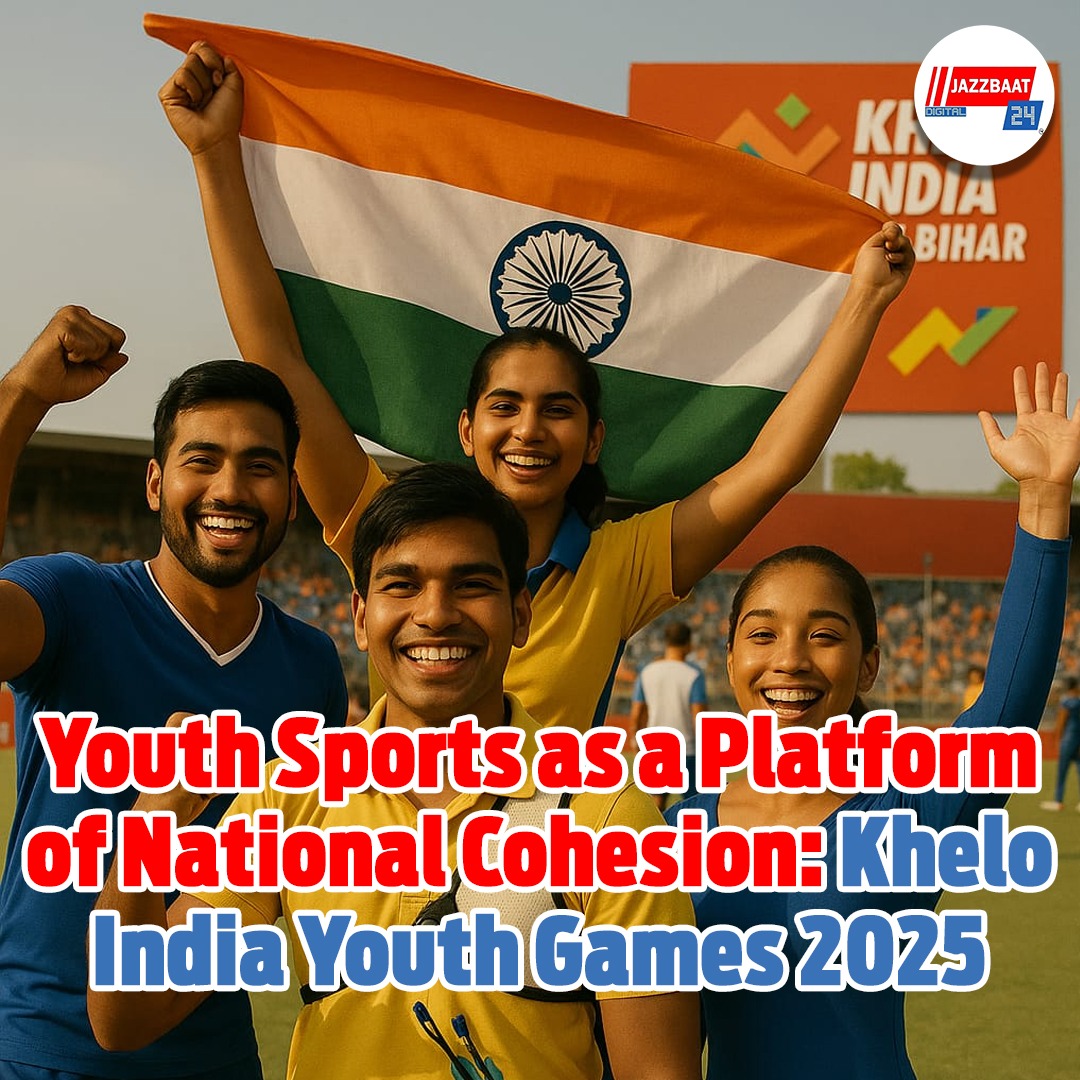
The Khelo India Youth Games 2025, spanning five throbbing districts of Bihar, looked beyond the brilliance of the sportspersons. With over 10,000 youth sportspersons across 28 sports, the event became a keen witness to the nation-building function of sport in the vast canvas of India's living mosaic of varied society. From regimented archers to kabaddi ferocity packs, each game vibrated with a predominant narrative—of unity, shared purpose, and the aspirations of a new generation bound by shared ambitions. Sport is the ultimate leveller.
Whether it was in a hill station village of Manipur or a coastal town of Goa, aspirational sports people flocked to Bhagalpur, Patna, Rajgir, Gaya, and Begusarai on an even footing. When the whistle blew and the arrows shot, economic provenance and local variation went to the back of one's mind. What mattered was skill, determination, and a will to perform. Then a Rajasthani runner who was from her adolescent years running against the same horizon as a Bengali gymnast understood that it was national identity versus local identity. Team drills solidified this bond even more. In relay runs, team gymnastics, and hockey, the players were learning to depend on teammates who belonged to other language groups and cultures. A Punjabi defender and a Kerala forward signaled to one another and coordinated, discovering that coordination could bridge language barriers. This impromptu cooperation on the field not only developed their physical abilities but planted seeds of understanding and respect—two components key to a united country.
Beyond the stadium, the village of athletes was a mini-world of Indian diversity. Nightly cultural festivities invited participants to take part in local dances, folk songs, and traditional cuisine. A Tamil Nadu youth taught others a sequence of Bharatanatyam, as a participant from Bihar performed the vigor of his local dance form. Such interaction created interest and respect, with competitors looking upon one another as not "others" but co-beneficiaries of shared cultural heritage.
The economic and social waves of the Games translated into host cities.
City entrepreneurship thrived, from street stalls selling local delicacies to artists peddling homemade goodies. Citizens poured in to donate their time—driving athletes around, manning help desks, and cheering from sidelines. In doing so, they were shareholders in a story of oneness through sports too. The Games demonstrated the way that sporting activity could trigger local development, bringing in a relationship between communities and the nation as a whole. Coverage in the media then became an overriding influence bringing various publics together into one experience.
Live television broadcasts and live internet casts carried the success of these young sportspersons into sitting rooms from Kanyakumari to Kashmir. Children in remote villages looked in wonder as television names streamed in belonging to their counterparts, jeering within crowds halfway around the globe. Social media amplified such experiences to take them to another level to enable netizens to celebrate, console, and identify with one another in the instant. This was a virtual tapestry of shared feelings that surpassed the physical tapestry of emotion constructed in arenas. The success of Khelo India Youth Games 2025 also indicated the importance of institutional support.
Government ministry, corporate firms, and civil society organizations collaborated and provided top-level training, medical attention, and diet guidance. In rural and semi-urban areas, where sporting facilities are typically behind, the Games initiated investment in world-class stadiums, training centers, and accommodation for athletes. That will be a legacy that will endure for generations to come beyond the last parade, allowing future generations to enjoy the facility to fulfill their sporting aspirations. But the real measure of these Games is to be found in the individual tales.
Imagine Aishwarya Kumari, a village schoolgirl whose coolness under fire was not due to her having control over her nerves but by the faith and trust reposed in her by her trainers as well as kin. Or the district kabaddi champion who, after victory at the national level, had vowed to induce other students of his hometown to play the sport. These accounts detail the way in which youth sports can transform lives, build self-esteem, and inspire communities as they give people a sense of belonging to something larger than themselves. Challenges include, nonetheless. Language, travel arrangements, and differences in diet can discourage participation, especially where less-resourced competitors are involved. Regular access to quality coaching and mental health provision is equally important. But the example of the model KIYG 2025 sets a stark one: by plugging such gaps with specifically designed policy interventions and continuing investment, India will find means to access the global potential of sport. The Universal Potential of Sport.
Lastly, the Khelo India Youth Games 2025 not only crowned champions but also sewed together the different strands of India's pluralist tapestry into a strong, integrated national fabric.
Cultural exchange, win and loss shared in common, and shared experiences enabled young sportspersons to bond across regional fault lines. As they come home—whether it is in the Himalayas, on the river Ganges or on the west coast of Arabia—they bring home not just medals but the unshakeable perception of oneness. Behind them is India's promise: the nation of the future will be constructed by tomorrow's children through one arrow, one run and one huddle at a time.